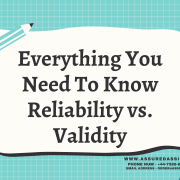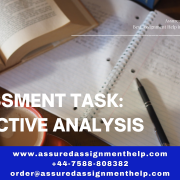Introduction
Tax deduction on running the motor home is important as it is been used for business purposes. In the study, advice to Mr. and Mrs. V about the tax implication and fringe benefits will be given based on their motor home. The calculation of the amount up to which they can get the tax deduction will also be mentioned in the study. Tax implication that Mike has to pay for buying and selling the property with his friend will is included in the study. The tax issues that may Joan be mindful of for being registered under PAYE will be discussed in the study. The study will also include the sponsorship of money to a friend’s business and the tax implication if possible in such granting.
Q1 Answer
| Calculation of the vehicle expenses | ||
| Total Cost | ($) | |
| The actual panel van cost | 56000 | |
| Cost of making a motor home | 98000 | |
| Total expenses | 4000 | |
| The total expense of the motor home | 158000 | |
In sum, Mr. and Mrs. V have started a business that requires traveling in a motor home. The actual cost of the motor home is $15800 the amount needed to prepare the panel van is $ 56000 and the cost to make the panel van into a motor home cost $98000. Other than the cost relating to the motor home, the insurance fuel has cost $ 4000. Therefore, it has been calculated that the total expense of the motor home is $ 158000.
| Calculation of the tax deduction | |||
| Kilometers for business | 6400 | ||
| Taxable deductible kilometers | 5000 | ||
| Tax deduction allowable | 66% | ||
| The actual deduction available is | 3300 | ||
The above calculation has been done for the amount that can be allowed for deduction for the motor van vehicle. According to the Australian tax, when a person runs a business on a motor van then the calculation of the deduction allowable in the tax is done differently. As per the tax, a person who sings a motor van can claim a maximum of 5000 business kilometers for a single vehicle (Hall, 2014, p.115). In this context as Mr. and Mrs. V have run their vehicle for 8000 km and out of it they have used their vehicle for 6400 as their business use, for this they have exceeded the limit of deduction allowable in the business trip per vehicle. However, they can get a deduction up to 500 Km. Therefore the km they can get deductions is 5000 and they have to pay tax for the rest (6400-5000) 1400 km. The percentage of deduction on the 5000 km is 66 percent for the business year of 2015-16, 2016-17, and 2017-18 (Thieme, Mehrholz, Pohl, Behrens & Dohle, 2013, p.1). Therefore, it is also mentioned in the above calculation that the amount of the deduction that Mr. and Mrs. V got from the tax is$ 3300, which is calculated at $5000 @ 66%.
In discussing the fringe benefit of the business car used by Mr and Mrs v is that there are some segments of the car for getting the tax benefits. A car used in business is only eligible to enjoy the tax benefits of the car sedan, or a car that is carrying a weight of less than one tonne which is 1000 kilograms (Baek, 2015, p.111). In addition, a car is eligible to get fringe benefits if it is found that the motor is carrying a person, which is less than nine. Here in the case of Mr. and Mrs. V the motor is getting used for the business weighing 4005 kilograms, which is far more than the criteria for getting the tax-free benefit. Therefore, in this business, Mr. and Mr.V will not enjoy any fringe benefit of tax. They will just enjoy the deduction on the kilometers of the rave for business purposes. Therefore, it can be said that the only option for deduction of the tax on the business of Mr. and Mrs. is to deduction in the running kilometers by the motor van, and that kilometer is only for the business trip related.
Q2 Answer
In sum, Mike has purchased and property with his friend. After 3 years and after development made in the property David and Mike have decided to sell the land. Even if Mike knew that the price of the property was inflation and the price was increasing gradually, he still gets ready to sell the land for the sake of his friend. If the property is made vacant at the time of selling then the tax implications will be on the Capital gain tax, which means that after the sale is made, Mike has earned the capital gain. It is also to be advised that if it is found that the property has been used for business purposes and/or if it is purchased to resell then this sale will be considered trading stock.
For the calculation of the stock, if it is considered that the land was used capital asset then for the calculation of the capital gain tax, the amount of purchase of the land, the expenses incurred in the time of maintaining the land (Ndikumana, 2015, p.73). These expenses are included within the cost of the land and on that basis, the taxis are calculated.
Now if the land is considered as a trading cost then the amount that is incurred in the time of the expenses and the income made in the business activities in the property will be countable in the time of calculating the tax (Luechinger & Roth, 2016, p.1). Therefore, it is assumed that the property is vacant and gets the consideration of the capital asset. Therefore Mike will implicate the CGT i.e., Capital gain tax at the time of selling the property. The tax s implicated for both Mike and David.
Q3 Answer
PAYE is the pay-as-you-earn method in which employees are allowed to pay taxes on the amount they are earning. When an employee earns less, then the tax amount is also less. In addition, when the amount is more, the payment of tax is also more. Therefore, in the case of Joan, she has to pay tax on the basis she earns monthly.
Therefore, in the case of Jowan, she has to pay tax on the basis she earns monthly. As their employer of Joan has registered her in PAYE, she has to keep some tax issues in mind such as, not having P45U or P45 or P45ESA, The reasons behind not having the P45U, and P45 are, the employee was unemployed and did not even have the Jobseeker’s Allowance. The employee may also not have contributory Employment and Support Allowances. Joan must have the JSA and ESA to have the P45 and P45U to solve the issue in the tax of PAYE. Joan must be mindful in the matter that she did not lose the P45 or P45U once these are issued are not issued again for an employee. However, if Joan lost the p45 or P45U then her employer should ask her to fill up the starter checklist to solve this issue.
When there are changes happen in the tax after the preparation of the budget, the amount can increase or decrease. In this case, Joa has to be mindful about the matter that she has to stay updated about the changes happening in the Tax budget. As per (Aghion, Dechezleprêtre, Hemous, Martin & Van Reenen (2016) again, if the wages increase or decrease in the occupational expenses of the employee then it can face the problem relating to tax payment under PAYE (p.1). Joan has to be mindful of the changes happening in the wages that she is earning from her employer, as the earning that she receives from the employer determines the amount of tax she pays.
Q4 Answer
When it is considered that Yuan s paying the amount of $35000 to Mike for his development of business but in the affection of love and affection, it is treated as a gift of a friend due to love and affection and this is not countable in the income of the business.
Now if it is assumed that Mike s not getting the amount from the end of love and affection from his friend. Now this case the amount that Yuan pays s the amount he is investing to buy an asset for his business. It is considered that there is no relation between Mike and Yuan and thus this will be considered as the amount paid for gaining capital assets. At the time of calculating, the tax on the capital expense will consist of the amount of $ 35000 paid to Mike.
Conclusion
It is found the percentage of deduction on the motorcar that can be deducted from paying the tax. It is found that Mr. and Mrs. V run their motorcar for business use for 6400 km. However, they are getting a deduction of only 5000 km. Mike and David are selling the property and can face several issues relating to the property. It is assumed that they are using the property as capital gain and they have to pay tax on the capital gain tax structure. Joan has to keep mindful of the issues that are arising due to the Pay as you go tax payment method. The granting of the amount to Mike is accepted to be a gift for Mike. Again it is assumed that the amount given by Yuan to Mike as business purpose then Mike have to consider the amount as a loan.
Reference List
Aghion, P., Dechezleprêtre, A., Hemous, D., Martin, R., & Van Reenen, J. (2016). Carbon taxes, path dependency, and directed technical change: Evidence from the auto industry. Journal of Political Economy, 124(1), 1-51.
Baek, Y. M. (2015). Current status of the E-commerce market in China and implications. Journal of Digital Convergence, 13(1), 111-124.
Hall, C. M. (2014). Second home tourism: An international review. Tourism Review International, 18(3), 115-135.
Luechinger, S., & Roth, F. (2016). Effects of a mileage tax for trucks. Journal of Urban Economics, 92, 1-15.
Marston, G. (2016). Greening the Australian Welfare State: Can Basic Income Play a Role? In Basic Income in Australia and New Zealand Palgrave Macmillan US, 12(2), 157-177
Monte, A. A., Zane, R. D., & Heard, K. J. (2015). The implications of marijuana legalization in Colorado. Jama, 313(3), 241-242.
Ndikumana, L. (2015). International Tax Cooperation and Implications of Globalization. Global Governance and Rules for the Post2015 Era: Addressing Emerging Issues in the Global Environment.—Bloomsbury Academic, 73-106.
Rauscher, R. C., & Momtaz, S. (2015). Sustainable Neighbourhoods in Australia. Auckland: Springer International Publishing
Rizzo, I., & Mignosa, A. (Eds.). (2013). Handbook on the economics of cultural heritage. Cheltenham, United Kingdom: Edward Elgar Publishing.
Thieme, H., Mehrholz, J., Pohl, M., Behrens, J., & Dohle, C. (2013). Mirror therapy for improving motor function after stroke. Stroke, 44(1), 1-2.










